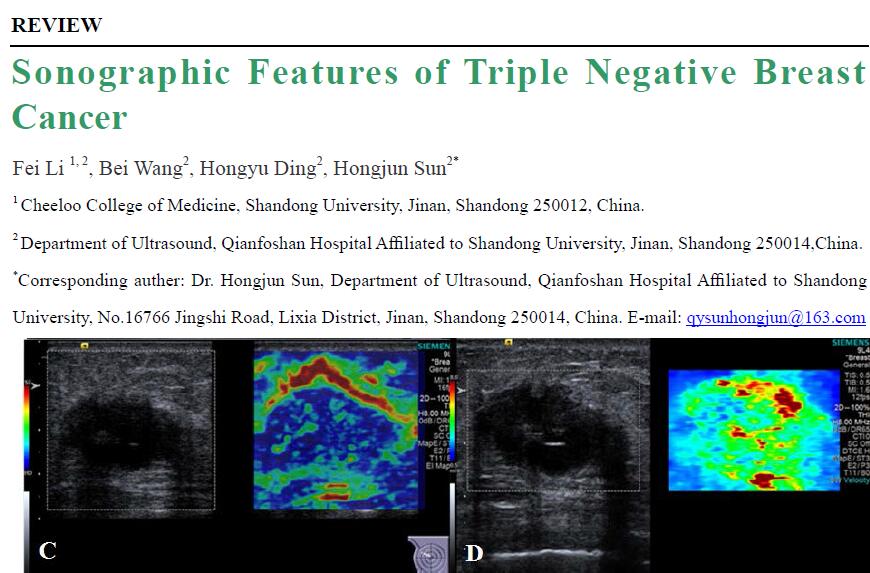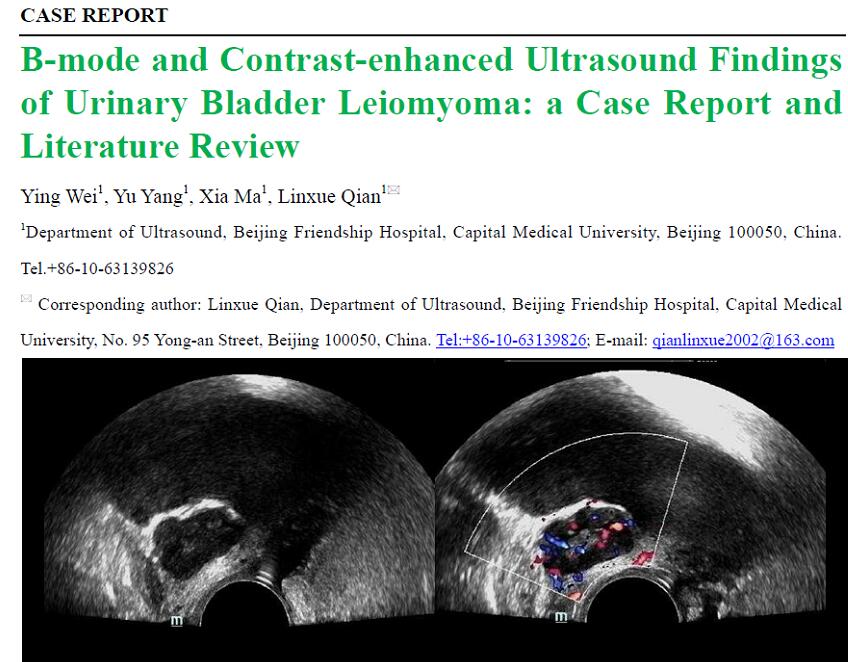Original Research
- Safety and Efficacy of Percutaneous Radiofrequency Ablation Combined with Percutaneous Ethanol Injection for Hepatocellular Carcinoma in High-risk Locations
- Meng Li, MD, Zhiyan Li, MD, Yuejuan Gao, MD, Jiangke Tian, MD, Min Chen, MD, Jinghui Dong, MD
- 2018, 2 (1): 1-7. DOI:10.37015/AUDT.2018.180004
- Abstract ( 472 ) HTML ( 6 ) PDF ( 15788KB ) ( 436 )
-
Objective: The purpose of the study was to evaluate the safety and efficacy of percutaneous ultrasound (US) guided radiofrequency ablation combined with percutaneous ethanol injection to treat hepatocellular carcinoma in presumably high-risk locations.
Methods: Between September 2013 to December 2016, A total of 69 hepatocellular carcinoma patients with 76 nodules in high-risk locations, defined as less than 0.5cm from a large vessel or an extrahepatic organ, who underwent US-guided percutaneous radiofrequency ablation, combined with percutaneous ethanol injection, were retrospectively assessed. One or two radiofrequency electrodes were inserted and placed at designated places in the tumor. One ethanol needle was placed at the tumor periphery near the high-risk location. Absolute ethanol was injected into the tumor before radiofrequency ablation.. The safety and efficacy of the therapy were assessed by clinical data and imaging in follow-up examinations.
Results: All tumors were completely treated with one or two sessions; 61 tumors underwent one session; 15 tumors underwent two sessions. The primary technique was effective in 73 (96.1%) tumors, according to computed tomography (CT) or magnetic resonance imaging (MRI) follow up. No patients had major complications. Two (2.9%) patients died of primary disease progression that was not directly attributable to radiofrequency ablation. Local tumor progression was noted in 3 (3.9%) tumors in the follow-up period. The locally progressing tumors underwent additional therapy (one patient underwent radiofrequency ablation and transcatheter arterial chemoembolization, another patient with 2 nodules underwent transcatheter arterial chemoembolization).
Conclusions: US-guided percutaneous radiofrequency ablation, in combination with percutaneous ethanol injection, is a safe and effective treatment for hepatocellular carcinoma in high-risk locations.
- Ultrasonographic Assessment of Thyroid Nodules in Two Groups of Pregnant Women: Is the Nodular Phenotypic Expression Dependent on Obstetric and/or Environmental Factors?
- Menene Nkonika, MD, Yixuan Wang, MD, Bidingija Mabika, MD, Fei Li, MD, Bei Wang, MD, Kasangye Kangoy, MD, Geoffrey Joseph Changwe, MD, Lin Liao, MD, Mvuezolo Mbanza, MD, Hongyu Ding, MD, Hongjun Sun, MD
- 2018, 2 (1): 8-17. DOI:10.37015/AUDT.2018.180002
- Abstract ( 415 ) HTML ( 7 ) PDF ( 15698KB ) ( 410 )
-
Objective: To evaluate the association between the obstetric and environmental factors and the phenotypic expression of thyroid nodules (TN) in two groups of women with differences in terms of race and regional localization.
Methods: A retrospective study in 92 non-healthy pregnant women (51 Chinese and 41 Congolese) who consulted the endocrinology. Ultrasonographic characteristics of TN as well as thyroid hormone levels were evaluated.
Results: The obstetric history was more loaded in the Congolese group than in the Chinese. The prevalence of TN was 10 times higher in Congolese women than in Chinese (odds ratio (OR) = 10.1, P < 0.001), and was correlated to the parity in the two study populations (three times higher in women with more than three births in the past (OR = 3.3, P < 0.001 vs nulliparous)). Multiple thyroid nodules (MTN) were associated with parity in the Congolese women (OR = 4.5, P = 0.04). Mean value of maximal diameter (32.8 ± 3 mm vs 7.2 ± 1 mm, P = 0.001) and that of volume (29.1 ± 4 mL vs 0.2 ± 0.1 mL, P = 0.003) of single/dominant nodules were greater in the Congolese women than in the Chinese. Most of Single/Dominant (S/D) nodules (47.1%) were anechoic in the Chinese, while heterogeneous in the Congolese group (51.4%).
Conclusion: Parity plays a substantial role in the occurrence of TN. Nodular phenotypic expression may vary according to regions (or environments), and probably interaction between genetic predispositions (possibly) and other factors (as parity and iodine deficiency) could have a paramount role in controlling that phenotypic expression.
Review Article
- Sonographic Features of Triple Negative Breast Cancer
- Fei Li, MD, Bei Wang, MD, Hongyu Ding, MD, Hongjun Sun, MD
- 2018, 2 (1): 18-23. DOI:10.37015/AUDT.2018.180005
- Abstract ( 368 ) HTML ( 10 ) PDF ( 15783KB ) ( 435 )
-
Triple-negative breast cancer (TNBC) is regarded as an aggressive disease that has a poor prognosis. Preoperative diagnosis of TNBC is very important for treatment options. This article reviews the ultrasound features of TNBC so that it can be early identified.
Case Reports
- Imaging Features of Multiple Inflammatory Pseudotumor- Like Follicular Dendritic Cell Sarcoma in Spleen: A Case Report and Literature Review
- Nianyu Xue, MD, Youfeng Xu, MD, Li Song, MD, Shengmin Zhang, MD, Yunzhong Wang, MD
- 2018, 2 (1): 24-26. DOI:10.37015/AUDT.2018.180001
- Abstract ( 372 ) HTML ( 11 ) PDF ( 16803KB ) ( 382 )
- B-mode and Contrast-enhanced Ultrasound Findings of Urinary Bladder Leiomyoma: A Case Report and Literature Review
- Ying Wei, MD, Yu Yang, MD, Xia Ma, MD, Linxue Qian, MD
- 2018, 2 (1): 27-30. DOI:10.37015/AUDT.2018.180008
- Abstract ( 308 ) HTML ( 8 ) PDF ( 16405KB ) ( 450 )
















